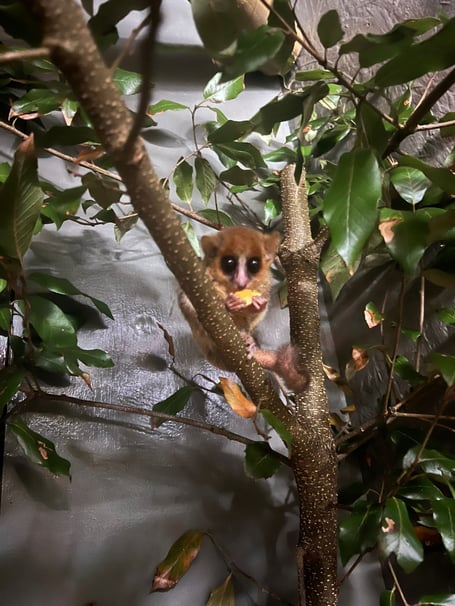Shaldon has become the first ever UK zoo to care for the rare and elusive Goodman’s mouse lemur, Microcebus lehilahytsara.
A male and a female arrived at Shaldon Wildlife Trust last week from Zoo Zurich. The pair are now settling into a specially designed nocturnal habitat.
Native to the highland rainforests of Madagascar, Goodman’s mouse lemurs are among the smallest primates in the world, weighing just 60 grams. They are nocturnal, solitary foragers with remarkable agility and sharp senses, and are named in honour of renowned American biologist Dr. Steven M. Goodman, who has made major contributions to Malagasy conservation science.
‘We are incredibly proud to be the first zoo in the UK to house this fascinating species,’ said Shaldon Wildlife Trust Director, Zak Showell. ‘Goodman’s mouse lemurs are rarely seen outside their native habitat, and their presence here offers an exciting opportunity for conservation education, research, and species advocacy.’
The arrival of the lemurs is part of a wider European breeding programme coordinated under the European Association of Zoos and Aquaria (EAZA). Zoo Zurich has successfully bred the species for many years and is now working with selected partners to help establish a sustainable safety-net population in European zoos.
‘We are grateful to Zurich Zoo for entrusting us with these two remarkable individuals,’ Showell added. ‘With deforestation and habitat fragmentation continuing to threaten Madagascar’s biodiversity, collaborative conservation breeding efforts are more important than ever.’
Visitors to Shaldon will be able to see the mouse lemurs in the ‘Forest By Night’ habitat. Special low-light conditions allow guests to observe their natural nocturnal behaviours while ensuring their comfort and wellbeing.
The addition of Goodman’s mouse lemurs reinforces Shaldon’s commitment to protecting the world’s smallest and most endangered species. The Trust, a registered charity, is known for its focus on rare and often overlooked animals and continues to play a key role in international conservation efforts.





Comments
This article has no comments yet. Be the first to leave a comment.